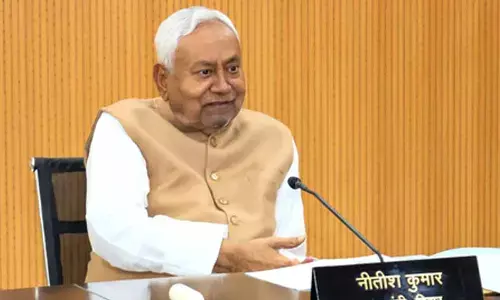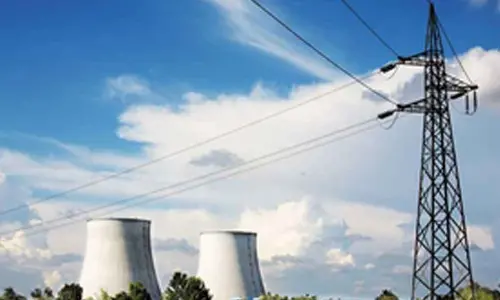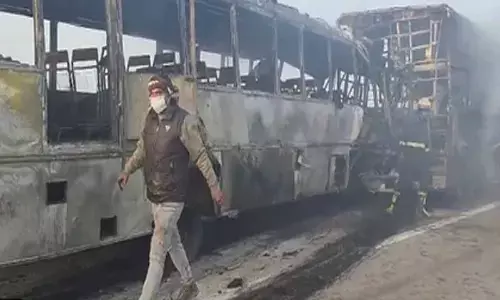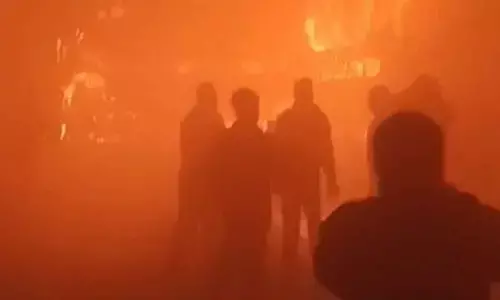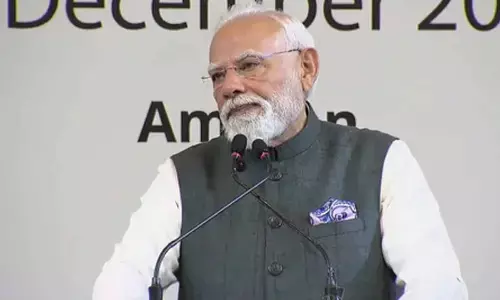Sand dunes appearing in waterless Godavari river
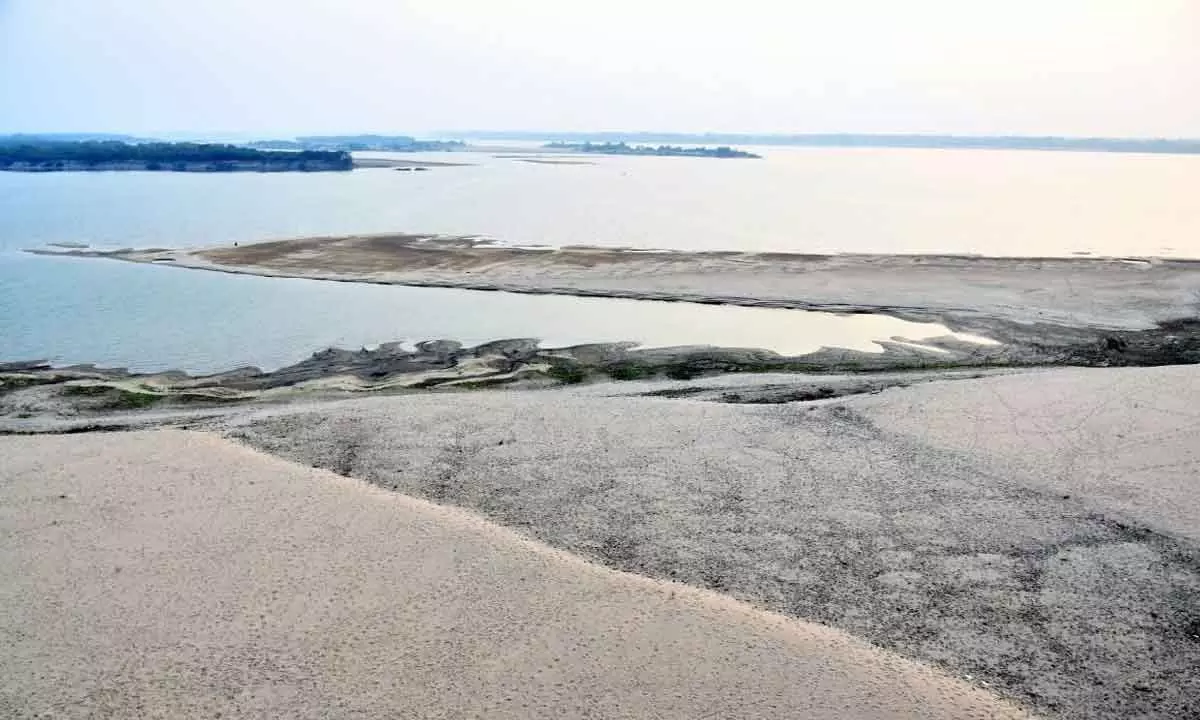
Water level dropped to the lowest in the river
Rajamahendravaram (East Godavari district): Sand dunes are emerging in Godavari river as the water level has dropped to its lowest level. The current water level at Dowleswaram Sir Arthur Cotton (SAC) Barrage is 7.60 feet. The inflow at SAC Barrage in Godavari is only 6,000 cusecs out of which 2,030 cusecs of water is supplied to East Delta, 1,325 cusecs to Centre Delta and 3,540 cusecs to West Delta. At this same time last year, the water level here was more than 10 feet. In the current situation, water scarcity has come up in all the three deltas under Dowleswaram Irrigation Circle.
East Godavari, Kakinada, Dr BR Ambedkar Konaseema and West Godavari districts and part of Eluru district come under the jurisdiction of these deltas. Rice crops are cultivated twice a year in about 10 lakh acres within these areas. Besides, Godavari is also source of drinking water needs of many areas in these districts. Water is supplied from here to Eluru and Visakhapatnam areas also for various purposes.
With scanty water in the river, all ghats became waterless or dry. Farmers are the worst sufferers due to lack of irrigation water in the suburbs and tail-end areas. There is a situation where water could not be supplied even in shift system. Besides, freshwater fish ponds and shrimp ponds within Godavari deltas are also suffering with water crisis.
Irrigation department officials have estimated that a total of 94 TMCs of water is available and it is sufficient for Rabi crops, fresh water needs and fish ponds. 57.5 TMC of water was already used. As Rabi farming is delayed, water is needed till April second week. Hence, another 36.5 TMC of water is required.
Initially, the officials have planned to take 40 TMCs from Sileru. Out of this, 20 TMCs has already been used and 20 TMCs is yet to come. But as per the estimations, the requirement is 36.5 TMCs. In the three deltas, crops in more than one lakh acres have faced water problems. The crisis is more in Ambedkar Konaseema, Kakinada and West Godavari districts.
According to the Water Resources department officials, there is severe water crunch in 17 mandals in all the deltas. Due to the implementation of shift-wise water distribution system, there is water scarcity in almost all the areas. Pasala Venkata Reddy, a farmer from Anaparthi area, said that in the past there was a special action plan and alternative arrangements to overcome the water problem in Rabi season. But now there is no mention of them, he added.
Farmers leader Velugubanti Prasad from Kadiyam area said that it is regrettable that there is no planning, no funds and no supervision for pumping water from drains with engines, cross-bunds and pumping water. About 6,000 cusecs of water is being released from Sileru for Rabi needs in Godavari delta.
Meanwhile, the officials informed that it takes three days for the water to flow about 160 km from there and to reach Dowleswaram barrage and the percentage of water wastage is also high. But now Sileru waters seems to be the only ray of hope. It is said that besides meeting the requirements of Rabi season, some adjustments can also be made for fish ponds and drinking water requirements.








